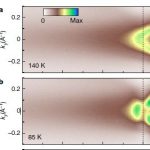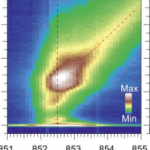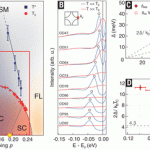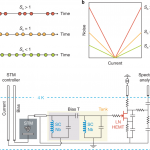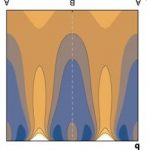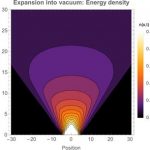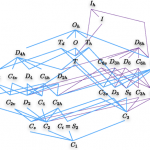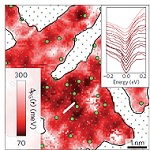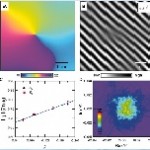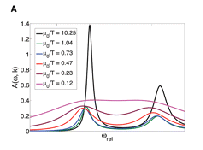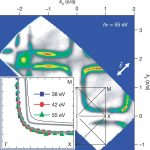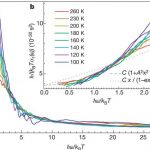Unconventional spectral signature of Tc in a pure d-wave superconductor
In conventional superconductors, the phase transition into a zero-resistance and perfectly diamagnetic state is accompanied by a jump in the specific heat and the opening of a spectral gap1. Nature, January 2022 (link will follow)
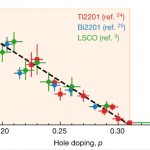 Incoherent transport across the strange-metal regime of overdoped cuprates Strange metals possess highly unconventional electrical properties, such as a linear-in-temperature resistivity1,2,3,4,5,6, an inverse Hall angle that varies as temperature squared7,8,9 and a linear-in-field magnetoresistance10,11,12,13. Identifying the origin of these collective anomalies … Nature, July 2021
Incoherent transport across the strange-metal regime of overdoped cuprates Strange metals possess highly unconventional electrical properties, such as a linear-in-temperature resistivity1,2,3,4,5,6, an inverse Hall angle that varies as temperature squared7,8,9 and a linear-in-field magnetoresistance10,11,12,13. Identifying the origin of these collective anomalies … Nature, July 2021
Magnetic Excitations in infinite-layer nickelates The discovery of superconductivity in infinite-layer nickelates brings us tantalizingly close to a material class that mirrors the cuprate superconductors. We measured the magnetic excitations in these nickelates using resonant inelastic x-ray scattering at the Ni L3-edge. Science, July 2021
Electronic structure of the parent compound of superconducting infinite-layer nickelates The search continues for nickel oxide-based materials with electronic properties similar to cuprate high-temperature superconductors1,2,3,4,5,6,7,8,9,10. The recent discovery of superconductivity in the doped infinite-layer nickelate NdNiO2 (refs. 11,12) has strengthened these efforts. Nature Materials, 2020
Incoherent strange metal sharply bounded by a critical doping in Bi2212 In normal metals, macroscopic properties are understood using the concept of quasiparticles. In the cuprate high-temperature superconductors, the metallic state above the highest transition temperature is anomalous and is known as the “strange metal.” We studied this state using angle-resolved photoemission spectroscopy. Science, Nov. 2019
Rapid change of superconductivity and electron-phonon coupling through critical doping in Bi-2212 More than 30 years after the discovery of high-temperature superconductivity in copper oxides, its mechanism remains a mystery. Electron pairing mediated solely by lattice vibrations—phonons—is thought to be insufficient to account for the high transition temperatures. Science, Oct 2018
Charge trapping and super-Poissonian noise centres in a cuprate superconductor The electronic properties of cuprate high-temperature superconductors in their normal state are highly two-dimensional: transport along the crystal planes is perfectly metallic, but is insulating along the perpendicular ‘c-axis’ direction. Nature Physics, Oct 2018
Doping the holographic Mott insulator Mott insulators form because of strong electron repulsions and are at the heart of strongly correlated electron physics. Conventionally these are understood as classical ‘traffic jams’ of electrons described by a short-ranged entangled product ground state. Nature Physics, July 2018
Quantum Thermalization and the Expansion of Atomic Clouds The ultimate consequence of quantum many-body physics is that even the air we breathe is governed by strictly unitary time evolution. The reason that we perceive it nonetheless as a completely classical high temperature gas is due to the incapacity of our measurement machines to keep track of the dense many-body entanglement of the gas molecules. Scientific Reports, July 2017
Generalized Liquid Crystals: Giant Fluctuations and the Vestigial Chiral Order of I , O , and T Matter The physics of nematic liquid crystals has been the subject of intensive research since the late 19th century. However, the focus of this pursuit has been centered around uniaxial and biaxial nematics associated with constituents bearing a D∞h or D2h symmetry, respectively. Phys. Rev. X, Oct. 2016
Universality of pseudogap and emergent order in lightly doped Mott insulators High-temperature superconductivity in the cuprates emerges from doped Mott insulators1. When extra carriers are inserted into the parent state, the electrons become mobile but the strong correlations from the Mott state are thought to survive inhomogeneous electronic order, a mysterious pseudogap and, eventually, superconductivity appear. Nature Physics, Sept
From quantum matter to high-temperature superconductivity in copper oxides The discovery of high-temperature superconductivity in the copper oxides in 1986 triggered a huge amount of innovative scientific inquiry. In the almost three decades since, much has been learned about the novel forms of quantum matter that are exhibited in these strongly correlated electron systems. Nature Vol. 518, Feb 2015
The space group classification of topological band-insulators Topological band-insulators (TBIs) are bulk insulating materials, which in the presence of time-reversal symmetry feature topologically protected metallic states on their surface or edge. Nature Physics Vol. 9, Dec 2013
Topological Defects Coupling Smectic Modulations to Intra–Unit-Cell Nematicity cuprates We study the coexisting smectic modulations and intra–unit-cell nematicity in the pseudogap states of underdoped Bi2Sr2CaCu2O8+δ. By visualizing their spatial components separately, we identified 2π topological defects throughout the phase-fluctuating smectic states. More: Science Vol. 333, Jul 2011
String theory, Quantum Fase Transitions, and the Emergent Fermi Liquid A Central problem in quantum condensed matter physics is the critical theory governing the zero temperature quantum phase transition between strongly renormalized Fermi liquids as found in heavy fermion intermetallics and possibly in hig-critical temperature superconductors. Science Vol. 325, July 2009
Towards a complete theory of high Tc Given the successes of the microscopic theory of conventional superconductors, it seems natural to expect a similar all-encompassing theory for high-temperature superconductivity. But is it the best approach? Where are we heading? Nature physics Vol. 2, 2006
Nodal quasiparticle in pseudogapped colossal magnetoresistive manganites A characteristic feature of the copper oxide high-temperature superconductors is the dichotomy between the electronic excitations along the nodal and antinodal directions in momentum space, generally assumed to be linked to the ‘d-wave’ symmetry of the superconducting state. Nature Vol. 438, Sep 2005
Quantum critical behaviour in a high-T-c superconductor Quantum criticality is associated with a system composed of a nearly infinite number of interacting quantum degrees of freedom at zero temperature, and it implies that the system looks on average the same regardless of the time- and length scale on which it is observed. Nature 425, Aug 2003
Fullerene superconductivity and the dynamic jahn-teller effect – response Science Vol. 255, Mar 1992
Superconductivity in the fullerenes Intramolecular vibrations strongly scatter electrons near the Fermi-surface in doped fullerenes. A simple expression for the electron-phonon coupling parameters for this case is derived and evaluated by quantum-chemical calculations. The observed superconducting transition temperatures and their variation with lattice constants can be understood on this basis. To test the ideas and calculations presented here, we predict that high frequency H(g) modes acquire a width of about 20% of their frequency in superconductive fullerenes, and soften by about 5% compared to the insulating fullerenes. Science Vol. 254, Nov 1991

